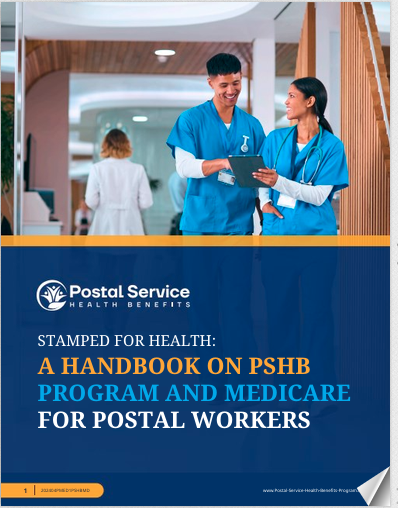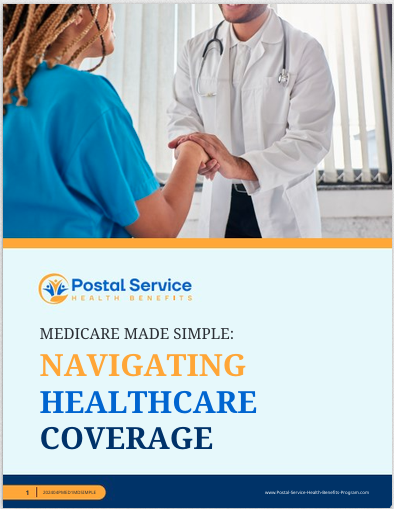Key Takeaways
-
Medicare Advantage plans can come with strict networks and authorization hurdles that may delay or limit access to care—especially for retirees relying on the Postal Service Health Benefits (pshb) system.
-
It is critical to weigh convenience, costs, and access to specialists before choosing Medicare Advantage as part of your PSHB-integrated benefits.
Medicare Advantage Isn’t Always What It Seems
If you’re a Medicare-eligible Postal Service retiree or family member, you’ve probably heard about Medicare Advantage plans. They promise extras, streamlined coverage, and coordinated care—all appealing features. But when you’re enrolled in a PSHB plan and trying to make decisions that affect your health and finances, it’s essential to ask: What actually happens when you try to use one of these plans?
In 2025, PSHB enrollees who are Medicare-eligible are automatically integrated into plans that coordinate with Medicare—often through Employer Group Waiver Plans (EGWPs). Some of these include Medicare Advantage options. Before you opt in or default into one, understand the full scope of what you’re getting—and what you might be giving up.
Access to Care: Networks Can Shrink Your Options
Medicare Advantage plans operate with network restrictions. If your preferred doctor, hospital, or specialist is not in-network, you may face higher costs—or be denied coverage altogether. For PSHB retirees who have long-standing relationships with specific providers, this becomes more than an inconvenience; it’s a disruption in continuity of care.
-
Many plans require you to select a primary care provider (PCP) and get referrals before seeing a specialist.
-
Out-of-network care is often not covered, or covered at much higher costs, unless it’s an emergency.
-
Not all top-tier hospitals or specialists are included in MA networks, even within urban areas.
Prior Authorization: Delays in Getting the Care You Need
In 2025, prior authorization requirements are a significant source of delay in Medicare Advantage plans. These are approvals that you must get from the plan before receiving certain tests, procedures, or specialist visits. While the intention is to manage costs and avoid unnecessary care, the result can be frustrating for patients:
-
You may have to wait days or even weeks for approval, especially for imaging studies or surgeries.
-
Appeals take time, which is particularly challenging during health crises.
-
Denials are not uncommon and often require multiple appeals or physician intervention to overturn.
If you’re used to the FEHB model or Original Medicare, where prior authorizations are less common or less intrusive, this change under a PSHB plan that includes Medicare Advantage may feel restrictive.
Emergency vs. Urgent vs. Routine: Definitions That Can Cost You
Many Medicare Advantage plans under PSHB differentiate between emergency, urgent, and routine care—each with different cost-sharing and coverage rules. Misunderstanding these categories could result in out-of-pocket surprises:
-
An urgent care visit might be denied if it’s deemed non-urgent in hindsight.
-
Emergency room visits are covered, but follow-ups might not be if the facility is out-of-network.
-
Some retirees discover after-the-fact that their follow-up care post-hospitalization is considered routine and not covered as they expected.
Clarity matters when your health is on the line, and vague plan language can lead to denied claims or unexpected bills.
Out-of-Pocket Costs Are Capped—But Not Small
In 2025, Medicare Advantage plans under PSHB include an annual in-network out-of-pocket maximum. For individuals, this cap is $7,500; for Self Plus One or Self and Family plans, it’s $15,000. This cap sounds like a safeguard, but you must consider what counts toward it:
-
Only in-network medical expenses apply.
-
Prescription drugs may have separate caps or fall under a different structure entirely.
-
Copayments and coinsurance can add up quickly with frequent specialist visits, therapy, or chronic condition management.
For retirees managing multiple health issues, you could hit the cap faster than expected—especially if your care is partially out-of-network or requires repeated authorizations.
Prescription Drug Coverage Sounds Better Than It Feels
Under PSHB, Medicare Advantage plans typically include integrated prescription drug coverage through an Employer Group Waiver Plan. In 2025, there’s a $2,000 cap on annual out-of-pocket prescription drug costs. While this is a welcome change, it’s important to ask how the plan structures your access:
-
Are your medications on the plan’s formulary?
-
Are you subject to step therapy, where you must try cheaper drugs before accessing what your doctor prescribed?
-
Is your preferred pharmacy in-network, or will you pay more out-of-pocket?
PSHB plans that combine MA with EGWP drug coverage might appear generous at first glance but still involve restrictive cost-saving mechanisms that require vigilance.
Travel Complications: Coverage Gaps Outside Your Home Area
One of the under-discussed limitations of Medicare Advantage is geographic restriction. While Original Medicare allows you to seek care anywhere in the U.S., MA plans tend to lock you into a defined service area:
-
If you travel often or split your time between states, your access to care may be interrupted.
-
Out-of-network care in another state might not be covered.
-
Routine care while visiting family could fall entirely outside your plan’s jurisdiction.
If you’re a snowbird or someone with family in other parts of the country, this limitation could complicate otherwise simple health visits.
PSHB-Medicare Integration Requires You to Be Proactive
Starting in 2025, if you’re a Postal Service annuitant and eligible for Medicare, you’re required to enroll in Medicare Part B to maintain full PSHB benefits—unless you meet exemption criteria. Many PSHB plans then automatically enroll you into a Medicare Advantage EGWP. This creates a unique coordination landscape:
-
You may receive new ID cards and must confirm your providers accept your MA plan.
-
PSHB plans may offer Part B premium reimbursements—but only under specific rules.
-
If you opt out of Medicare Part D integration, you may lose prescription coverage under PSHB.
Passive enrollment doesn’t mean passive decision-making. You must actively confirm how your plan works and whether it serves your health goals.
What You Gain—And What You Might Miss
Medicare Advantage can offer benefits that Original Medicare doesn’t—such as dental, vision, hearing aids, and gym memberships. But these perks are not standardized. Under PSHB, you might get:
-
Extra benefits with value-added services
-
Wellness programs
-
Access to 24/7 nurse hotlines
However, these should not distract from the core functionality: access to doctors, treatment, and medication. Make sure the “extras” don’t sway you from scrutinizing the essentials.
Time Windows You Can’t Miss
The most critical decisions happen outside the doctor’s office. Timing is everything in 2025:
-
Initial Enrollment: You have a 7-month window around your 65th birthday to enroll in Medicare without penalties.
-
Special Enrollment: Retiring? You may qualify for a Special Enrollment Period to sign up for Medicare Part B and ensure smooth PSHB integration.
-
Open Season: Every year from November to December, you can review and change your PSHB plan.
Missing these timelines could result in gaps in coverage, higher costs, or irreversible plan limitations.
How to Make the Right Choice for Your Situation
Don’t be lured by marketing language or assumptions. Ask the questions that really matter:
-
Does your provider accept the Medicare Advantage plan linked to your PSHB option?
-
What are the real out-of-pocket costs—monthly and annually?
-
How restrictive is the drug formulary?
-
What happens if you need care while out of state?
Being informed means being empowered. You deserve a plan that serves your health needs without barriers.
Your Health Comes First—Not Just the Brochure
It’s easy to be drawn in by promises of extra benefits, but it’s your access to actual care that matters. If you’re a Postal Service retiree or family member under PSHB, don’t let glossy marketing sway you. Medicare Advantage might work for you—but it might also leave you without the care you thought you had.
Take time this Open Season to review your plan. Don’t rely on assumptions or convenience. Get clarity now so you’re not caught off guard later.
If you have questions about what works best with your health conditions, prescriptions, and care preferences, reach out to a licensed agent listed on this website for one-on-one guidance.







